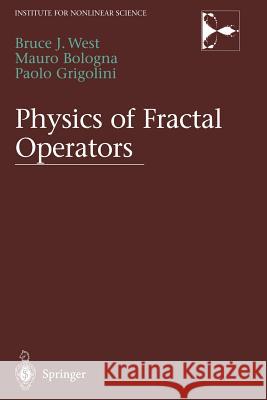Physics of Fractal Operators » książka
Physics of Fractal Operators
ISBN-13: 9781441930545 / Angielski / Miękka / 2011 / 354 str.
In Chapter One we review the foundations of statistieal physies and frac tal functions. Our purpose is to demonstrate the limitations of Hamilton's equations of motion for providing a dynamical basis for the statistics of complex phenomena. The fractal functions are intended as possible models of certain complex phenomena; physical.systems that have long-time mem ory and/or long-range spatial interactions. Since fractal functions are non differentiable, those phenomena described by such functions do not have dif ferential equations of motion, but may have fractional-differential equations of motion. We argue that the traditional justification of statistieal mechan ics relies on aseparation between microscopic and macroscopie time scales. When this separation exists traditional statistieal physics results. When the microscopic time scales diverge and overlap with the macroscopie time scales, classieal statistieal mechanics is not applicable to the phenomenon described. In fact, it is shown that rather than the stochastic differential equations of Langevin describing such things as Brownian motion, we ob tain fractional differential equations driven by stochastic processes.











